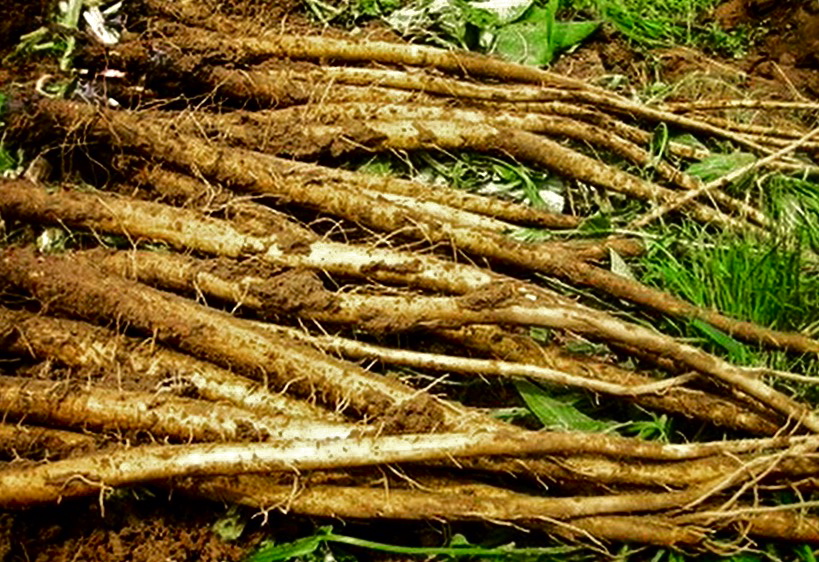Medicinally, burdock root, leaf, and seed are quite different. In traditional Chinese medicine, Niú Bàng Zǐ 牛旁子, or the dried fruiting seeds of Arctium lappa L., are collected in early autumn and then sun-dried. These seeds are the primarily used part of the wild burdock plant in Chinese medicine, having an acrid, slightly bitter flavor and slight cold nature that goes to the lung and stomach meridians. Niú Bàng Zǐ yields, in decoction, significant antipyretic and antibacterial effects that detoxify various conditions.
Wild burdock root, known as gobō 牛蒡, was introduced to Japan from China around 940 AD and has been eaten as a vegetable since. Burdock root assists in lowering blood sugar and cholesterol. It reduces the accumulation of food stasis, phlegm, toxins, and waste in the body from constipation. Burdock root is considered useful in preventing and treating stroke and some cancers, and contains a range of B vitamins that make it beneficial for buffering the liver. Burdock root can be added to stir-fries, made into pickles and condiments, and has an enticing texture.

